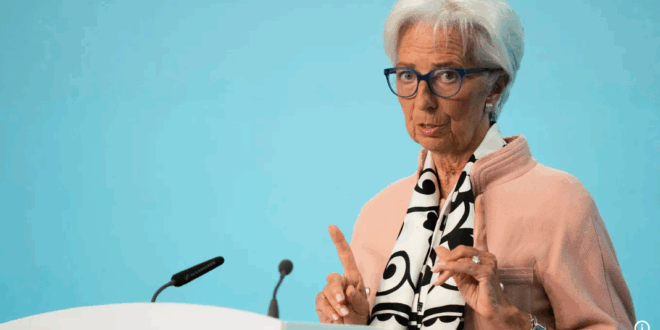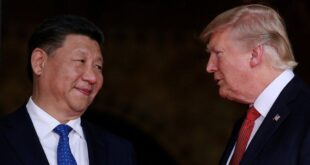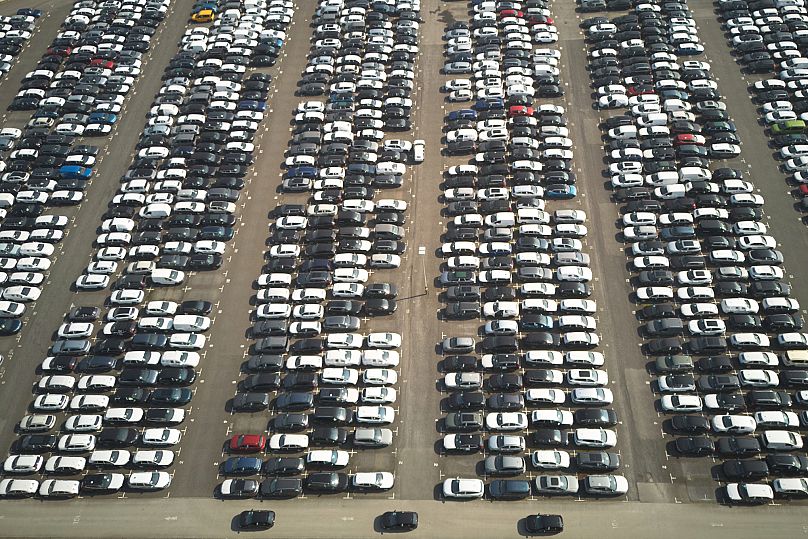Muhamad Yehia.. Cairo
Trump’s tariff push may cool down rather than heat up inflation in Europe. Falling energy prices, a stronger euro and excess goods supply from China are disinflationary forces, likely prompting the ECB to consider deeper rate cuts down the road.
When US President Donald Trump announced sweeping new tariffs on 2 April, the world braced for a fresh surge in inflation, but three weeks later, a growing number of economists and policymakers see the opposite happening.
Far from stoking inflation, tariffs could end up being the trigger that pushes European interest rates even lower.
European Central Bank (ECB) officials have already begun adjusting their tone. Earlier this month, the Governing Council unanimously cut the deposit facility rate by 25 basis points to 2.25%, with ECB President Christine Lagarde hinting that a 50-point move was also discussed.
The US tariff announcement appears to have tilted the stance in Frankfurt, with policymakers now prioritising downside growth risk
“We’re seeing the tariff impact in PMI numbers, in intentions to purchase, intentions to hire,” Lagarde said in an interview with The Washington Post this week, adding that “tariffs are probably more disinflationary than inflationary.”
Lagarde also indicated that the ECB is likely to downwardly revise its growth outlook in its upcoming June meeting.
Lower commodity prices, stronger euro, weaker demand
Oil prices have fallen more than 15% since early April, while the European Dutch TTF natural gas benchmark has dropped over 22%
This cooling in energy markets reflects expectations of slower global growth, particularly if US tariffs restrict trade flows and reduce business confidence.
At the same time, the euro has strengthened against the dollar, thus limiting imported inflation.
Another force fuelling disinflation, especially in Europe, is the expected redirection of global goods.
Goldman Sachs economist Giovanni Pierdomenico said that US tariffs will create around $300 billion (€280 billion) in excess global supply. With US demand falling, some of that surplus, especially from China, is likely to find its way to Europe.
Past episodes suggest about 15% of excess supply ends up in the euro area, equivalent to a 1.5–2% increase in goods supply. “We estimate this should translate into around -1.5% of downside to the price level of core goods, corresponding to -0.5% downside to core HICP,” Pierdomenico said.
“China will have overcapacity, will want to reroute its exports somewhere, possibly to Europe. That would have a dampening impact on prices,” Lagarde said.
ECB eyes deeper rate cuts
With inflationary pressures easing, markets are increasingly betting that the ECB will deliver additional rate cuts before year-end. Bank of America now expects the deposit rate to fall to 1.25% by December, citing “lower growth, even lower inflation, and policy rates to drop” further.
The bank recently revised down its euro area GDP forecasts to 0.8% for 2025 and 1.0% for 2026, highlighting tariff-related uncertainty, a stronger euro, and subdued global demand.
Germany, given its export-heavy economy and vulnerability to auto sector tariffs, is projected to shrink by 0.1% in 2025. France and Italy are forecast to grow just 0.4% and 0.7%, respectively.
Falling wage pressures are adding to the disinflationary tilt. Bill Diviney, head of macro research at ABN Amro, said the Indeed wage tracker declined to 2.7% in the first quarter- the lowest since the pandemic. “Disinflationary forces mean the ECB is likely to cut rates further to 1.5% by September,” he said.
Diviney added that the euro’s recent appreciation, tighter financial conditions, and lower energy prices had all reinforced the case for further easing. “Our conviction in inflation leading to an undershoot of the ECB’s 2% target by the turn of the year has increased.”
While the ECB is reacting to European conditions, the risk of a US downturn looms large. Goldman Sachs economist Alexandre Stott noted that in past cycles, most European economies entered recession within three quarters of a US contraction. “We already forecast small contractions for Germany, Italy, and Switzerland in Q3 this year,” he said.
Although the full effects of President Trump’s trade tariffs have yet to materialise, the early market and policy response suggests that inflation fears may have been overdone.
Instead, falling commodity prices, weaker demand, and a redirection of global supply are creating a disinflationary environment that may compel the ECB to accelerate its easing cycle in the months ahead.
 موقع وجه أفريقيا موقع وجه أفريقيا هو موقع مهتم بمتابعة التطورات في القارة الأفريقية
موقع وجه أفريقيا موقع وجه أفريقيا هو موقع مهتم بمتابعة التطورات في القارة الأفريقية






